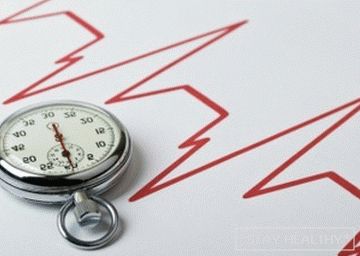 Existence
Existence
special fat loss zone – the pulse rate at which fat
consumed as an energy source – one of the most
common and oldest myths in the world of fitness.
Magazines, video programs and the Internet are constantly praised.
workout in the area of fat burning, as the most effective way
fight against body fat.
Even the vast majority of modern cardiovascular machines
equipped with stickers or tables to determine the pulse rate
for burning fat.
The idea itself is that by maintaining a pulse in the area
55-65% of the maximum value, you will miraculously
burn more fat than when working with even more
intensity.
Why work hard if you can lose kilograms and in more
relaxed pace? This is where the appeal of the myth lies.
about the magical area of fat burning. The truth is that existence
such a specific range is a delusion that you are following.
you can, at best, slow down the pace of progress, and at worst –
do not throw a kilogram.
Contents
Relative and absolute fat burning
To understand the nature of the myth of the zone of fat burning and debunk it,
need to figure out how the human body uses energy during
workout time. In a simplified version, with any active
physical activity, the body receives energy, primarily from
two places: glycogen stores and fat deposits. Glycogen is
reserve of carbohydrates in muscles and liver.
The myth of the area of fat burning arose from the data that under load
lower intensity energy flows more into
the result of the breakdown of fat, not glycogen. Is not that great?
You can lie on the couch and lose a lot of fat! This is where
it turns out something amiss with this mythical zone.
When training with a pulse of 50% of the maximum value
the body receives energy from 60% of fat and 40% of glycogen.
At 75% of the maximum heart rate, this ratio is 35%
65% (already in favor of glycogen), and with an increase in pulse consumption of fat
falls even more.
So why train at full strength if fat is burned
so little? The answer is simple – it’s all about calories. When you are intense
exercise, then burn much more calories than sitting
on the couch.
If you compare the two classes with moderate and high intensity,
lasting 30 minutes each, then you can see the following
picture:
| Training 30 minutes | Fat Calories | Glycogen Calories | Total calories burned |
|---|---|---|---|
| Low intensity (50% of maximum heart rate) | 120 | 80 | 200 |
| High intensity (75% of maximum heart rate) | 140 | 260 | 400 |
So, you can see that in high-intensity training
calories twice as much. In addition, calories derived from fat
more are also burned (140 vs. 120), although in their total consumption
share and less.
The calculation of the pulse for burning fat in most cases is carried out
по следующей методике: (220 – возраст в годах)/2.
So, for a 30 year old person with an initial level of physical
training this value will be around 90-100 beats per minute
((220-30) / 2 = 95). However, we need more weighty evidence, because
one could argue that in order to burn 20% more fat
It is necessary to increase the intensity of training by 50%. Not the most
the best way!
Fat burning zone vs. postburn effect
After the end of the workout with low intensity burning
calories are dramatically reduced. When you practice very intensively,
for example, during interval training, an exchange shift occurs
substances in which calories continue to be intensively consumed
even after completing the exercises. This effect is called
�”Postburning”.
The effect of post-burning will vary greatly depending on
the type of training, its intensity, duration, and even
method of measurement. In a study conducted in the United States under
the guidance of Dr. Christopher Scott at the University of Southern Maine,
considered the total calorie consumption for a certain period of time
в группах, занимавшихся с низкой и высокой intensity.
The participants of the first group pedaled the bike in moderate
temp over 3.5 minutes. The participants of the second were offered
run 3 sprints for 15 seconds each
maximum speed possible for them. What was the difference in
calorie consumption? Pretty significant!
Participants of the first group burned 29 calories for training 4
runners from the second. But if you take into account the effect
postburning and measuring calorie consumption and after class, the picture
changing dramatically.
�”Cyclists” total burned 39 calories against 65 spent
�”Sprinter”. Incredibly, 95% of the calories were spent after
workout! Do not forget that when riding a stationary bike
It was spent almost 5 times more time (3.5 minutes versus 45
seconds).
Significant and another study in the course of which it turned out
that with high intensity cycling training is also consumed
significant amount of fat. Indeed, with physical
high load intensity, for example, when cycling, which
was studied, glycogen is consumed first, but then, after
complete the workout – fat.
The myth of the fat loss zone suffers a crushing defeat in front of
the effect of post-burning, and the question “at what pulse the fat is burned”
does not find a definite answer. Of course, training with
moderate intensity have the right to exist, but for
fat burning is not the most effective option. Popular way
getting up early and jogging on an empty stomach will not help to lose
more fat than other more intense ways.
For busy people, the optimal choice is interval and circular
workouts that allow you to burn more calories and fat for
much less time.
Taking into account all the above, you should not rely
only for training to burn fat and gain well-defined
muscle.
Exercise helps you maintain muscle, stay in
fit, speed up the metabolism and burn some fat, but for
effective fat burning calorie consumption should cover them
admission Nutrition plays a much larger role in this matter, and
its adjustment should be given maximum attention.






